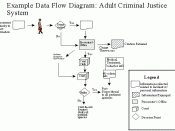Introduction
Much recent psychological research has centred around our capability to identify deception and lies. The ability to detect lies can be beneficial to many organisations including the criminal justice system, the police and even potential employers. Recent studies have endeavoured to show what characteristics are prevalent when we tell lies and what skills are necessary to detect them. There are many psychological processes that take place when we aim to deceive; our body language may change, our speech may alter and we may experience physiological differences. Most of us are already aware of the technological benefits of the polygraph test which measures our physiological changes, but can our verbal and nonverbal signals of deception be detected?
The research conducted by Ekman and O'Sullivan (1991) evaluates lie detecting abilities from a range of participants who work within the criminal justice system or intelligence services, in other words, people who would encounter lies in a professional capacity or "professional lie catchers".
This study aims to show if people with a professional interest in lie detection prove more adept at predicting whether people are lying or not. The researchers used a between participants experiment with 509 participants, all of them mostly selected from the criminal justice system. The participants were asked to predict whether subjects were lying or telling the truth, after viewing them on a videotape. All participants performed only slightly better than chance, apart from the Secret Service, who were significantly better statistically at detecting deception.
Design
This study focussed on the behavioural differences between people telling the truth and people telling lies and the use of micro-expressions in detecting deception. The first hypothesis being, "Those who make accurate judgements, regardless of their occupation, would describe different behavioural clues to those who make inaccurate judgements". The second hypothesis was,


